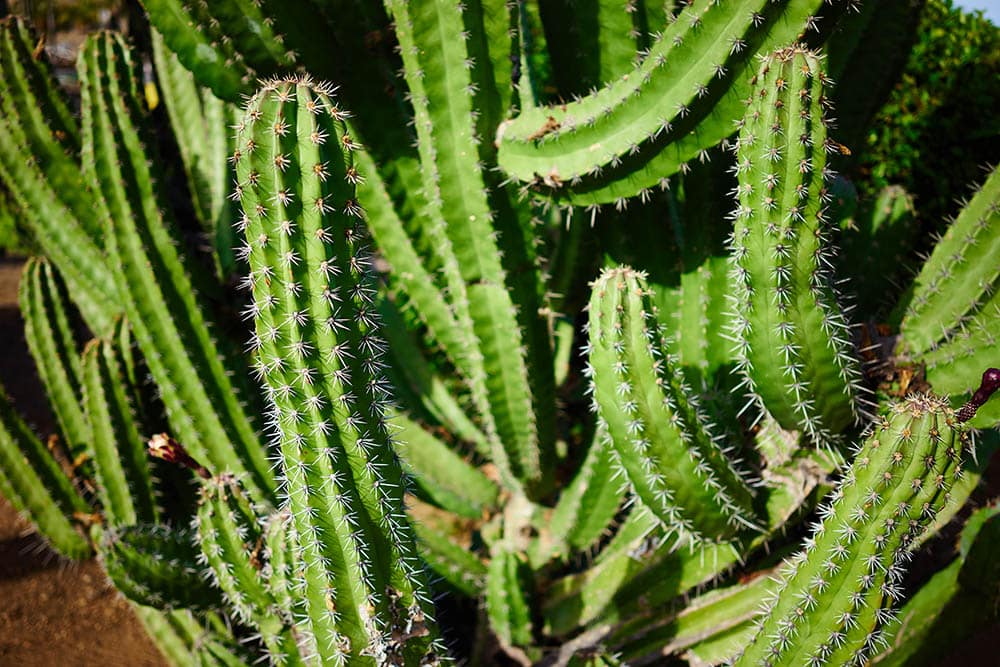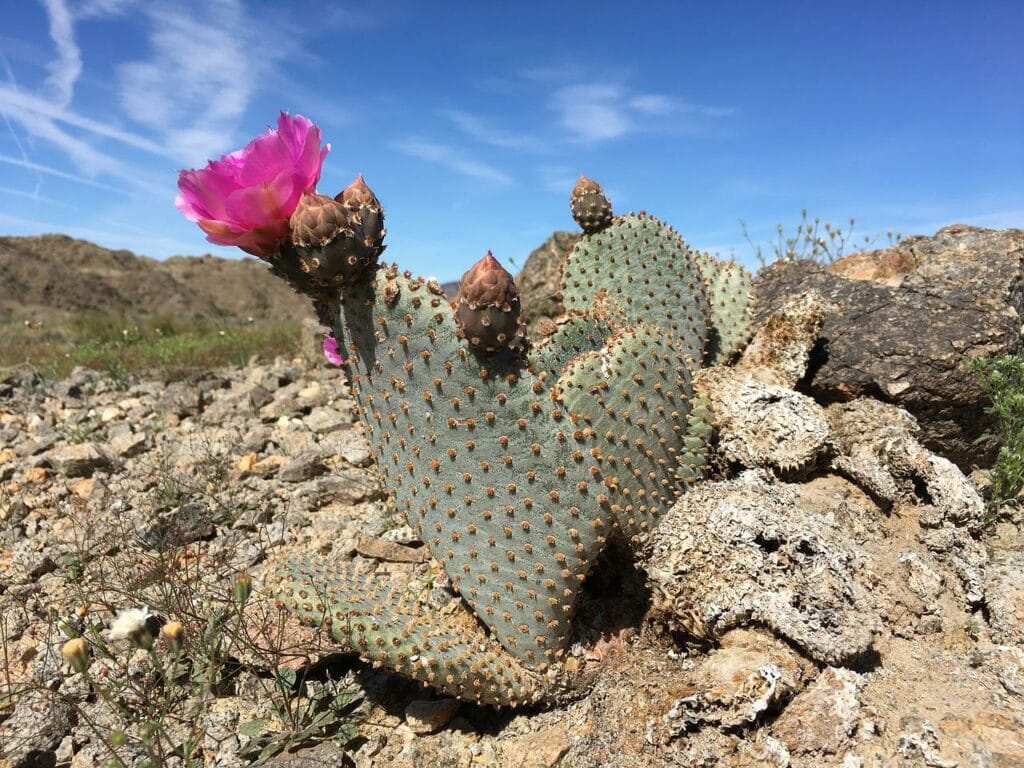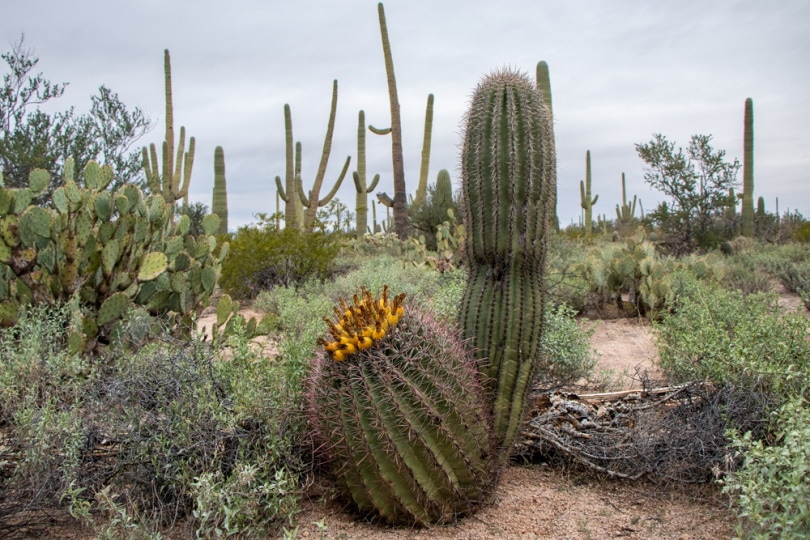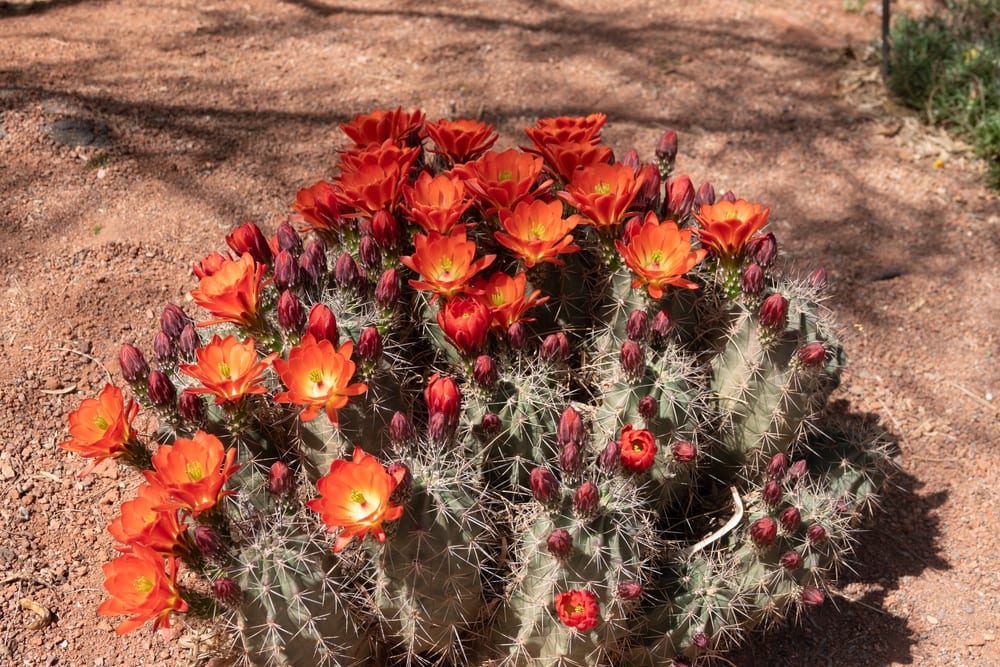How Do Cactuses Survive in the Desert? 7 Interesting Ways
-
Kristin Hitchcock
- Last updated:

While deserts are the driest places on earth, they aren’t devoid of life. Cactus species of all types have become accustomed to surviving in the desert. While each species is a bit different, they generally survive using the same principles.
Most people know that cacti store water. However, this isn’t the only strategy these plants use to survive. For instance, cacti also have spines instead of leaves to prevent water loss. Many species also have shallow roots. Some even grow temporary roots when it rains and then cut back to prevent water loss.
There is not a single way that cacti survive in the desert. Instead, they have developed many characteristics over the millennium to help them thrive in these harsh climates. Let’s take a look at some of these characteristics and how exactly they work.
The 7 Ways Cacti Survive in the Desert
1. Nighttime Photosynthesis
When a plant begins collecting carbon dioxide for photosynthesis, tiny pores open. These pores collect the gas from the air and make photosynthesis happen. However, this is a problem in the desert, as water leaves through these pores.
It doesn’t make much sense to lose water on purpose in the desert.
Luckily, cacti have found an answer to this issue—they become nocturnal. Instead of performing photosynthesis during the day, they open their pores at night. This prevents water loss, as the air in the desert is cooler at night.
The plant collects all the CO2 it needs at night. Then, when the sun comes up, the plant closes its pores and starts making sugars.

2. Water Storage
One of the most straightforward ways cacti survive is by storing water. Cacti have such large stems because they act as a reservoir for water. When it rains, cacti soak up far more water than most plants because they have somewhere to put it.
In this way, they are using the same “feast and famine” principle that many carnivores do. They feast on the water when it is available to help them survive through dry periods. The longer between rains, the more water a particular cactus has to store. Therefore, different species thrive in different areas.
Those in very dry places usually store more water than those where it rains more often.
Unlike most plants, cacti stems are often able to expand. Therefore, if there is a lot of water available, the stem can expand to hold more. When you cut up a cactus, you can often tell that it has an accordion shape, which allows it to expand and contract as necessary.
3. Waxy Skin
Cacti often have waxy skin. Unlike other plants that have almost no coating at all, cacti put much attention into their waxy skin, which helps limit water loss. It doesn’t make sense to store water if you can’t keep it, after all.
This waxy coating is extremely important. If it is removed, the plant typically cannot survive, as the water will evaporate through its skin.
However, the plant also has to protect this layer. For this reason, they have developed pointy spines to prevent birds and other animals from touching the surface of their skin. However, these spines also play another important role.

4. Spines
When you’re an animal in a desert, water is also extremely important. While animals will get water from traditional sources, many will also attempt to get it from plants. Therefore, cacti developed spines to prevent animals from stealing their water. Furthermore, these spines lose less water through evaporation than leaves would. There isn’t a lot of surface area on a spine, unlike a leaf. So, there is less space for water to leave.
Longer spines also restrict airflow to the surface of the plant. In this way, they prevent water from escaping the plant, which would occur if there was more airflow. While this difference may be small, it is considerable when you take the limited supply of water in a desert into account.
These longer spines also help shade the plant. The ground directly around a cactus is likely shaded due to the spines. Therefore, this soil will lose water less quickly, and the cactus will be shaded for much of the day.
Some spines even collect water themselves. Often, deserts have thick fog in the morning. The spines can collect this dew and allow it to drip into the ground below, where the plant’s roots can collect it. With that said, not all cacti have the same spines. Their main purpose differs slightly depending on the species. However, most spines play multiple roles.
5. Shallow Roots
Many people assume that cacti would have very deep roots to reach the water deep underground. However, this isn’t usually the case. Instead, the plant develops very extensive, shallow roots. These roots sit just underneath the surface of the soil and can extend quite a distance from the plant.
When it rains, these roots collect rainwater, which usually doesn’t make it very far into the ground. Some species even shoot out roots as it rains to help collect as much water as possible.
Then, when it becomes dry again, the cactus’s roots shrivel up. The roots will direct all water into the plant’s stem for storage and then break off. Otherwise, the roots would become more hydrated than the soil, which runs the risk of water loss into the soil.
Many plants in the desert have this trait—even cacti that don’t necessarily look like we’d imagine a cactus to look.

6. Short Growing Season
Growing requires a lot of energy, which requires a lot of water. While many plants grow quickly and constantly, cacti regularly stop growing to conserve water. When it is particularly dry, cacti will not grow. Instead, they will only grow when it rains and water is available.
Therefore, cacti tend to grow very slowly. It takes a long time for a cactus to reach a considerable size. To combat this, many cacti also live a very long time. Otherwise, they would be unable to reach a large enough size to reproduce.
7. Thick Tissue
The outside of a cactus is quite thick. Unlike other plants, cacti have a layer that could be called “tissue.” While other plants do have coverings, it is usually extremely shallow and not all that noticeable. These tissues help keep the water away from the outside of the plant, preventing water loss through evaporation.
Plus, it also keeps the water safer from outside influences, such as animals that may wish to take a free drink.

Conclusion
Cacti survive in the desert using many survival methods. There is not a single trait that allows these species to survive the harshest environments in the world. Instead, there are many traits that a cactus possesses that help it collect and retain the water it needs.
With that said, each species of cacti is a bit different. Some rely heavily on their long spines to protect them from predators and prevent water loss. However, other cacti species aren’t in areas with significant predators, so they may need to rely on their spines less.
Either way, practically every species does multiple things to help it survive. It’s all these small traits together that allow cacti to thrive in deserts.
Featured Image Credit: marako85, Shutterstock
Contents
